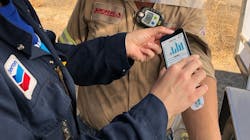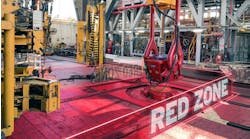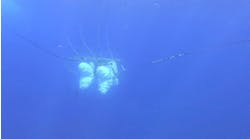Chevron testing skin patch that helps offshore workers avoid heat stress
Offshore staff
SAN RAMON, Calif. — For some Chevron employees, glancing at their phones could soon reveal more than the time of day; it could also alert them when they are at risk of experiencing heat stress. To bring this new type of personal protective equipment (PPE) to the company's offshore workers, Chevron is participating in a study that pairs a wearable biometric device with a smartphone.
Heat stress can sneak up on those who overexert themselves in precarious conditions. The biometric device—basically a skin patch with sensors—provides real-time analysis of data that can flag heat stress triggers. It monitors sweat and electrolyte loss and other factors, notifying workers when to take a break, hydrate or move to a shaded area.
Outdoor workers face an increased risk of suffering from heat strain, which can be deadly. According to the Centers for Disease Control and Prevention, approximately 600 heat-related deaths occur in the US every year. If widely adopted, Chevron said the biometric technology being piloted could be a game changer in preventing heat stroke.
Real-time data
Chevron began researching ways to protect offshore Gulf of Mexico workers from heat stress in 2018 and discovered Epicore Biosystems, a tech startup based in Cambridge, Massachusetts. In 2020 Chevron teamed up with Epicore on a wearable patch that could monitor the biomarkers of dehydration.
Results were promising but lacked a real-time, automated analysis of sweat loss. Such measurements make it possible to identify conditions that can lead to heat stress and strain.
In summer 2022, Chevron is testing an improved version of the device that pairs with a smartphone.
“The landscape of health wearables is a new frontier for everyone and for the health and safety industry,” said Michelle Stewart, a senior occupational hygienist at Chevron who is overseeing the project. “This technology is often referred to as cutting-edge work, and I’m told that what we’re doing this summer is going to be the largest field-based heat stress study ever done in the world.”
07.21.2022



